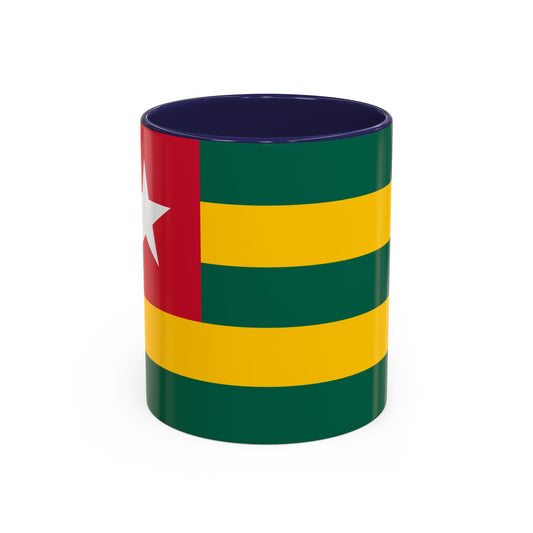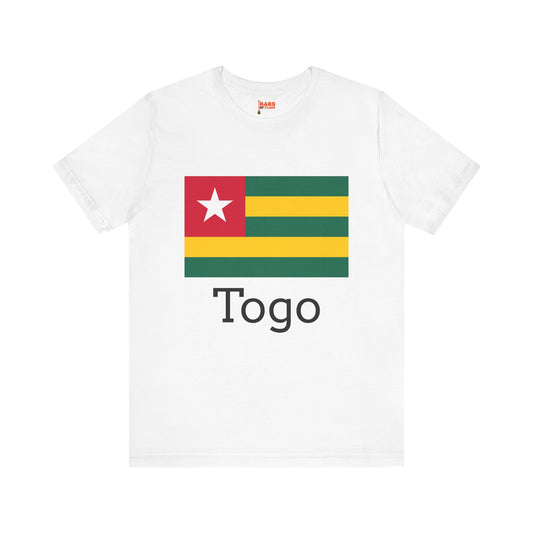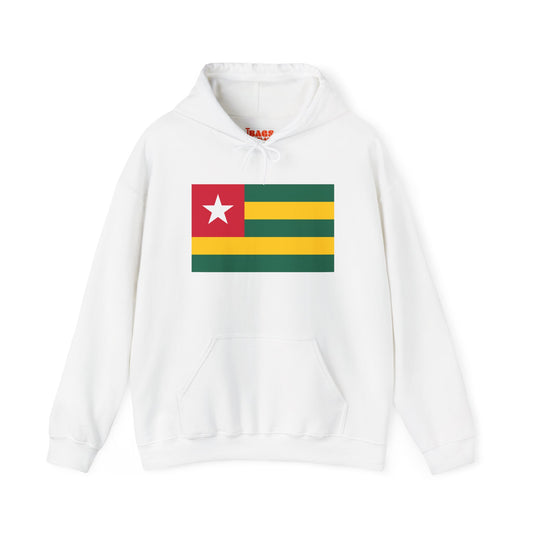-
Togo Flag Sweatshirt
Regular price $34.15 USDRegular priceUnit price / per -
Togo Pillow
Regular price $22.65 USDRegular priceUnit price / per -
Togo Backpack
Regular price $59.79 USDRegular priceUnit price / per -
Togo Leather Patch Hat
Regular price $18.85 USDRegular priceUnit price / per -
Togo Sweatshirt
Regular price $34.15 USDRegular priceUnit price / per -
Togo Trucker Cap
Regular price $14.90 USDRegular priceUnit price / per -
Togo Hoodies
Regular price $34.40 USDRegular priceUnit price / per -
Togo T-shirts
Regular price $22.79 USDRegular priceUnit price / per -
Togo Flag Hoodies
Regular price $34.40 USDRegular priceUnit price / per -
Togo Flag on T-shirt
Regular price $22.79 USDRegular priceUnit price / per
Collection: Togo
The Togo flag, also known as the flag of Togo, symbolizes national pride and identity for the West African country. It holds significant historical and cultural value, representing the ideals and aspirations of the Togolese people. We will delve into the design, history, symbolism, current relevance, and additional facts surrounding the Togo flag.
Overview of the Togo Flag's Design and Colors

The flag of Togo showcases a distinctive arrangement with five horizontal stripes in a palette of green, yellow, white, and red. Alternating in color, the outer stripes are green, followed by a single yellow stripe, a white stripe in the middle, and a bold red stripe just above the last green stripe. On the hoist side is a dark blue canton housing a white five-pointed star. This design choice makes the Togo flag visually striking and embeds deep meanings within each hue and element.
The green stripes are symbolic of the nation's rich agricultural landscape and its hope for the future. Yellow reflects Togo's mineral riches, a key component of the nation's wealth and economic backbone. White symbolizes peace and purity, signifying the country's desire for border harmony. The red stripe memorializes the courage and sacrifice of those who fought for Togo's independence, a testament to the nation's resilience. Lastly, the white star on the blue canton shines as a symbol of hope and independence, guiding the Togolese people toward a brighter future. This combination of elements results in a flag deeply representative of Togo's identity, aspirations, and values.
Historical Context of the Togo Flag
The Togo flag was officially adopted on April 27, 1960, marking a significant milestone in the country's journey to sovereignty. This date is etched in the annals of Togo's history, coinciding with its declaration of independence from French colonial rule. The flag's design resulted from a national competition, aiming to encapsulate the essence of the newly independent nation through symbols and colors that reflected its values, history, and aspirations. Since its adoption, the flag has stood as a constant symbol of national unity and identity, enduring through times of peace and conflict.
It has not undergone any changes, signifying the enduring nature of the ideals it represents. This steadfastness mirrors the resilience and perseverance of the Togolese people in maintaining their cultural heritage and sovereignty amidst the challenges of post-colonial Africa. The choice of symbols and colors, as a result of a collaborative and inclusive process, underscores the collective effort of the Togolese people to forge a shared national identity.
Symbolism Behind the Togo Flag

The Togo flag's symbolism is rich and deeply ingrained in the nation's consciousness. The alternating green and yellow stripes represent Togo's natural wealth, with green reflecting the fertility of the land, which is crucial for agriculture, and yellow symbolizing the country's mineral resources, which are fundamental to its economy. The white stripe serves as a powerful symbol of peace, purity, and unity, aspirations that are central to the Togolese ethos.
Red, a color deeply associated with courage and sacrifice, commemorates the bravery of those who fought for the nation's independence, a testament to their enduring spirit. At the heart of the flag, the white star on a blue canton stands as a beacon of hope, guiding the Togolese people toward a bright and sovereign future. Together, these elements encapsulate the essence of Togo's identity, combining historical significance with the aspirations of a forward-looking nation.
Current Relevance of the Togo Flag
Today, the flag of Togo continues to be a significant emblem of the nation’s sovereignty and unity. It is prominently featured at various public events, including national holidays, independence celebrations, and official state functions, symbolizing the enduring spirit and unity of the Togolese people. Additionally, it plays a crucial role in military ceremonies, where it is displayed with pride and reverence, reflecting the respect and honor accorded to those who serve the country. The flag's visibility at such events underscores its importance as a constant reminder of Togo's heritage and the shared aspirations of its people.
The Togo flag has also been central to civic engagement and political discourse in recent years. It has become a rallying symbol during Togo's political activism and social movements. Demonstrators often carry the flag during protests to embody national unity and express collective hopes for peace, democracy, and progress. Through these actions, the flag transcends its symbolic representation of the nation's past, embodying the ongoing struggle for justice and equity in Togo.
Furthermore, discussions around the flag have sparked conversations about national identity, governance, and preserving cultural values while striving for social and political change. Its presence in celebratory and challenging times demonstrates the flag's adaptability as a symbol of national pride and a desire for a brighter future for all Togolese.
Additional Facts About the Togo Flag
The protocol surrounding the Togo flag underscores the reverence with which it is held. In line with flag etiquette common to many nations, it is deemed disrespectful for the flag to come into direct contact with the ground. Additionally, displaying the flag in an inverted position is considered a sign of distress or disrespect, emphasizing the importance of correct presentation to maintain the dignity of the nation it represents.
An interesting aspect of the Togo flag is its unique color scheme and pattern, featuring five horizontal stripes. This design distinguishes it from the more common three or four-striped flags seen worldwide, highlighting its uniqueness in the global community of nations. Moreover, the flag's dimensions and aspect ratio also contribute to its distinctive appearance, further setting the Togo flag apart as a symbol of national identity and pride.






















